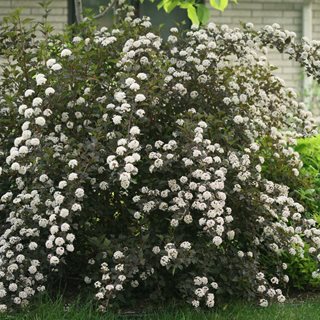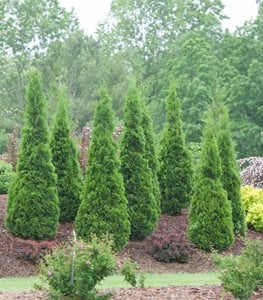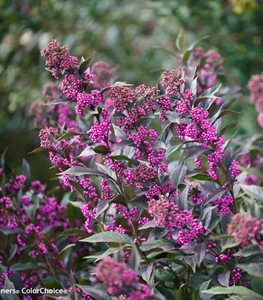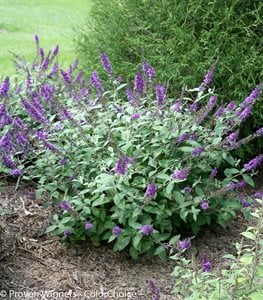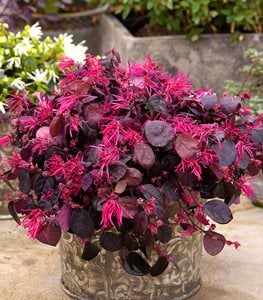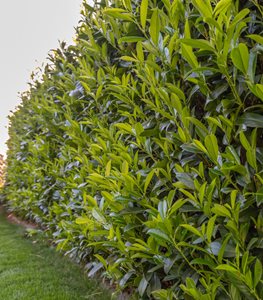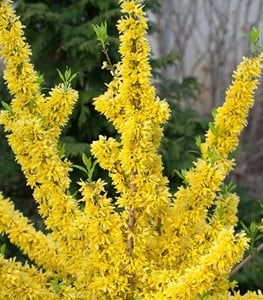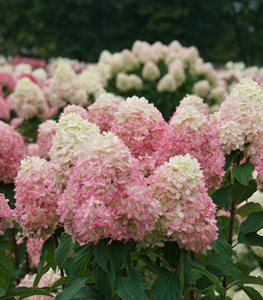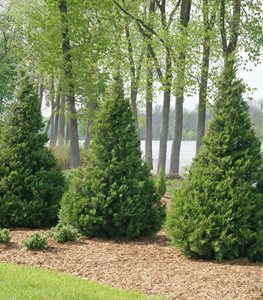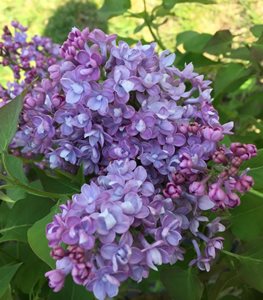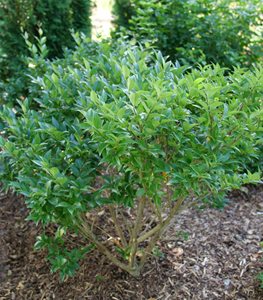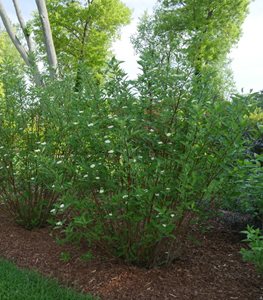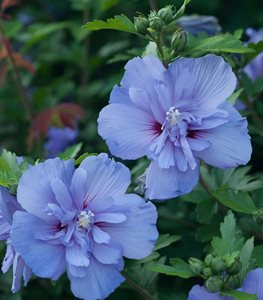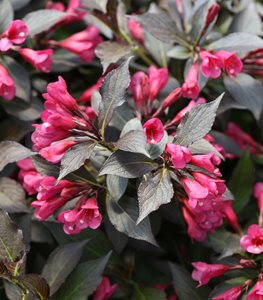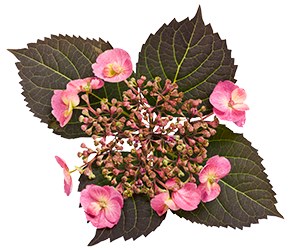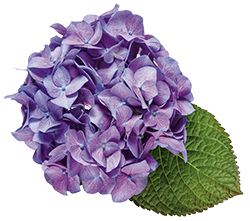17 Fast-Growing Shrubs for Your Garden
Add instant color to your landscape with these fast-growing shrubsThere are times when a quick landscaping solution is needed. Whether you’re starting out with a blank slate, renovating an existing yard, trying to create privacy, or block an unsightly view, fast-growing plants offer lush growth and instant color. Shrubs are the backbone of any landscape, providing structure, texture, and background interest to beds, borders, and foundation plantings.
When choosing fast-growing shrubs, take into account growing conditions and maintenance needs. Consider plant hardiness, light requirements, watering needs, and soil. Bushes such as laurel and privet are especially vigorous growers, requiring regular pruning so they don’t become overgrown. For small urban lots, choose varieties that won’t outgrow their space. Decide whether you prefer evergreen bushes for year-round color, or deciduous shrubs with multi-seasonal attributes that will also allow more light in winter.
BENEFITS OF FAST-GROWING SHRUBS
Here are ways that fast-growing shrubs may just be the solution you need:
- Privacy screening: Use fast-growing shrubs to screen out an unsightly view, provide privacy from adjacent properties, or create a lush, intimate outdoor room.
- Create shade: Fast-growing shrubs can provide quick shade for a hot part of the yard.
- Green up new spaces: For new properties with no landscaping, fast-growing shrubs are a quick solution for filling up an empty yard.
- Create a windbreak: In windy areas such as coastal regions, fast-growing shrubs can provide an effective windbreak in just a few years.
- Reduce urban noise: Vegetation helps mute noise from nearby roads and sidewalks.
- Control erosion: Fast-growing shrubs can be planted along a slope or hillside as a quick solution to stabilize the soil.
- Attract wildlife: Fast-growing shrubs provide shelter, food, and nesting habitat for songbirds and other wildlife. Flowering shrubs attract butterflies, bees, and other beneficial insect pollinators.
- Reduce maintenance: Many fast-growing shrubs are low maintenance, helping to create an easy-care landscape.
- Budget-friendly: Fast-growing shrubs fill in quickly, eliminating the need for other filler plants. Many types of shrubs will last longer than traditional fencing options.
BEST FAST-GROWING SHRUBS TO GROW
ARBORVITAE (Thuja spp.)
Zones: 2-9, depending on the variety
Exposure: Full sun to partial shade
Habit: Slender pyramidal or low mounding habit
Height/Spread: 2 to 70 feet tall, 2 to 25 feet wide
Growth rate: Several inches to 3 to 5 feet per year
Bloom time: Inconspicuous flowers
Arborvitae is a common garden plant that comes in a range of shapes and sizes to suit any landscape need. This coniferous evergreen tree or shrub grows at different rates, depending on the variety. Upright columnar or pyramidal varieties such as North Pole® (pictured), Sting® and ‘Emerald Green’ are suitable for narrow spaces, as hedging and screening. Learn more about growing arborvitae.
Pictured: North Pole® arborvitae from Proven Winners.
BEAUTYBERRY (Callicarpa spp.)
Zones: 5-10, depending on the variety
Exposure: Full sun to partial shade
Habit: Mounding or arching habit
Height/Spread: 3 to 6 feet tall and wide
Growth rate: Several inches to 3 to 5 feet per year
Bloom time: Late spring to mid-summer
This hardy deciduous shrub provides late-season interest in the landscape, with an elegant growth habit, showy purple berries, and golden fall color. The medium size of beautyberry is useful in smaller spaces, as privacy screening, or to divide garden areas. Learn more about growing beautyberry.
Pictured: Pearl Glam® beautyberry from Proven Winners.
BUTTERFLY BUSH (Buddleia or Buddleja spp.)
Zones: 5-9
Exposure: Full sun
Habit: Upright bushy habit
Height/Spread: 3 to 12 feet tall and wide
Growth rate: 1 to 2 feet per year
Bloom time: Summer to early fall
Butterfly bush is named for the colorful flower spikes that attract butterflies and other insect pollinators. Though this popular deciduous shrub is invasive in some regions, some newer varieties are sterile. Butterfly bush is suitable for small urban yards or mixed borders. Learn how to grow butterfly bush responsibly.
Pictured: Lo & Behold 'Blue Chip Jr. from Proven Winners.
CHINESE FRINGE FLOWER (Loropetalum spp.)
Zones: 7-10
Exposure: Full sun to partial shade
Habit: Upright mounding or spreading habit
Height/Spread: 1 to 15 feet tall, 3 to 10 feet wide, depending on the variety
Growth rate: 1 to 2 feet per year
Bloom time: Mid-spring; with some sporadic re-bloom
Related to witch hazel, this tender broadleaf evergreen shrub is characterized by tassel-like flowers and green, purple, or variegated foliage. Use as a background plant in a mixed border, as a colorful screen along a fence, or to brighten up a woodland garden. Learn more about growing Chinese fringe flower.
Pictured: Jazz Hands Bold® Chinese fringe flower from Proven Winners.
COTONEASTER (Cotoneaster spp.)
Zones: 3-8
Exposure: Full sun to partial shade
Habit: Upright or spreading habit
Height/Spread: 1 to 15 feet tall, 3 to 15 feet wide
Growth rate: While some Cotoneaster are slower growing, others can grow more quickly, putting on 1 to 2 feet of new growth per year.
Bloom time: Spring
Cotoneaster is an evergreen or deciduous shrub that comes in a range of forms, from spreading ground covers to upright types. This common landscape plant is grown for the colorful berries that provide fall interest and food for wildlife. Fast-growing varieties include ‘Coral Beauty’ (pictured) and bearberry cotoneaster. Plant a hedge along a driveway or pathway, or use a ground cover type to cover a slope or bank. (Some species are known to be invasive in some areas.)
ELDERBERRY (Sambucus spp.)
Zones: 3-9
Exposure: Full sun to partial shade
Habit: Upright bushy habit
Height/Spread: 3 to 30 feet tall and wide
Growth rate: Elderberry shrubs can reach their full mature size in 1 to 3 years
Bloom time: Spring to summer
Named for the edible fruit, this deciduous shrub provides multi-seasonal interest, with flat-topped flower panicles, showy fruits, and ferny foliage that adds texture to beds and borders. Varieties come in a range of sizes suitable for small yards or larger properties. Use as a background plant, or naturalize in a rain garden. Read more on how to grow elderberry.
Pictured: Black Lace® elderberry from Proven Winners.
ENGLISH LAUREL (Prunus laurocerasus)
Zones: 6-9
Exposure: Full sun to shade
Habit: Dense bushy habit
Height/Spread: 10 to 20 feet tall and wide
Growth rate: 1 to 3 feet per year
Bloom time: Spring
Also sometimes called cherry laurel, this broadleaf evergreen produces glossy green foliage, fragrant white flowers, and dark purple berries. This vigorous bush has a fast growth rate and needs regular pruning to keep it in check (known to be invasive on the West coast). English laurel is commonly used as hedging along a property line.
FORSYTHIA (Forsythia spp.)
Zones: 4-9
Exposure: Full sun to partial shade
Habit: Upright bushy or arching habit
Height/Spread: 1 to 20 feet tall, 3 to 10 feet wide
Growth rate: 1 to 20 feet tall, 3 to 10 feet wide
Bloom time: Early to mid-spring
Forsythia is valued for the bright yellow flowers that add cheerful color to the early spring landscape. This deciduous bush provides background color to foundation plantings and mixed borders, and is useful as hedging or screening. Forsythia is drought tolerant and virtually carefree once established. Learn more about growing forsythia.
Pictured: Show Off® forsythia from Proven Winners.
HYDRANGEA (Hydrangea spp.)
Zones: 3-9
Exposure: Full sun to partial shade
Habit: Upright bushy or arching habit
Height/Spread: 3 to 15 feet tall, 3 to 12 feet wide
Growth rate: Average of 2 feet per year
Bloom time: Summer to fall
One of the most popular landscape shrubs, Hydrangea is revered for the showy flower panicles that provide long-lasting color in the late-season landscape. Hydrangea have varying growth habits and flower colors. Plant in a row for a spectacular hedge, in shrub borders, or a woodland setting. Learn more about growing hydrangeas.
Pictured: Limelight Prime® hydrangea from Proven Winners.
JUNIPER (Juniperus spp.)
Zones: 2-10
Exposure: Full sun to partial shade
Habit: Upright pyramidal, columnar, spreading or weeping habit
Height/Spread: 1 to 130 feet tall, 1 to 25 feet wide
Growth rate: Several inches to 2 feet per year, depending on the variety
Bloom time: Inconspicuous flowers
Juniper is a common landscape tree or shrub that comes in a range of shapes and sizes. This evergreen conifer produces blue, green, silver, or gold foliage for soft background texture and color. Use a fast-growing variety such as ‘Spartan’, ‘Pencil Point’, or Eastern red cedar (Juniperus virginina) to screen an unsightly view, or for privacy along a property line. Learn more about growing juniper.
Pictured: Gin Fizz® juniper from Proven Winners.
LILAC (Syringa spp.)
Zones: 3-8
Exposure: Full sun to partial shade
Habit: Upright bushy habit
Height/Spread: 4 to 15 feet tall, 3 to 12 feet wide
Growth rate: 1 to 2 feet per year
Bloom time: Spring
This hardy deciduous bush is revered for the colorful flowers that add romantic charm and sweet fragrance to the spring landscape. Heart-shaped green leaves provide background color throughout the growing season. Use lilac shrubs to create a quick hedge, as screening, or massed in the landscape. Learn more about growing lilac shrubs.
Pictured: Scentara® Double Blue lilac from Proven Winners.
MOCK ORANGE (Philadelphus spp.)
Zones: 4-8
Exposure: Full sun to partial shade
Habit: Upright bushy or arching habit
Height/Spread: 3 to 10 feet tall and wide
Growth rate: 2 feet or more per year
Bloom time: Late spring to early summer
Philadelphus is grown for the intensely fragrant white flowers that appear in spring and summer. This native deciduous shrub is virtually carefree once established. Add quick color and fragrance to the landscape by using mock orange as hedging, to screen a fence line, or in foundation plantings. Learn more about growing mock orange shrubs.
Pictured: Illuminati Tower® mock orange from Proven Winners.
NINEBARK (Physocarpus opulifolius)
Zones: 2-8, depending on the variety
Exposure: Full sun to partial shade
Habit: Upright bushy, arching, or compact habit
Height/Spread: 3 to 10 feet tall, 3 to 12 feet wide
Growth rate: Some varieties can reach their full mature size in the first growing season.
Bloom time: Late spring to early summer
This North American native lends year-round appeal to the landscape, with colorful foliage, spring flowers, decorative seed heads, and peeling bark for winter interest. Ninebark has exceptional hardiness and reliability. Use this deciduous shrub as hedging, screening along a property line, or in a native garden. Learn more about growing ninebark shrubs.
Pictured: Summer Wine® ninebark from Proven Winners.
PRIVET (Ligustrum spp.)
Zones: 3-10
Exposure: Full sun to partial shade
Habit: Dense bushy habit
Height/Spread: 4 to 15 feet tall and wide
Growth rate: 2 to 3 feet per year
Bloom time: Late spring
Privet is one of the fastest growing shrubs, with green, gold, or variegated foliage. This reliable bush can be invasive in some areas, though newer varieties are sterile. Use to hide an unsightly view, as privacy screening along a property line, or as a windbreak. Plants are amenable to shearing, and need regular pruning to retain their shape and size. Learn more about growing privet shrubs.
Pictured: Kindly® privet from Proven Winners.
RED TWIG DOGWOOD (Cornus sericea)
Zones: 2-8
Exposure: Full sun to partial shade
Habit: Upright spreading habit
Height/Spread: 5 to 9 feet tall, 5 to 10 feet wide
Growth rate: 1 to 2 feet per year
Bloom time: Late spring
Red twig dogwood is a suckering deciduous shrub that is useful for quickly covering large areas. Plants have four-season appeal, with oval green leaves, white flowers, summer berries, fall color, and vivid stems for winter interest. Mass in a native landscape, or plant in a winter garden. Learn more about growing red twig dogwood bushes.
Pictured: Arctic Fire® Yellow dogwood from Proven Winners.
ROSE OF SHARON (Hibiscus syriacus)
Zones: 5-9
Exposure: Full sun to partial shade
Habit: Upright bushy habit
Height/Spread: 8 to 12 feet tall, 6 to 10 feet wide
Growth rate: Up to 2 feet per year
Bloom time: Mid-summer to fall
Hibiscus syriacus is a hardy plant with showy trumpet-shaped flowers that lend exotic appeal to the landscape. Plants produce blue, pink, red, or white flowers from summer into fall. This reliable deciduous shrub can be used as hedging, in foundation plantings, or as privacy screening. Learn more about growing rose of Sharon.
Pictured: Blue Chiffon® Rose of Sharon from Proven Winners.
WEIGELA (Weigela spp.)
Zones: 4-8
Exposure: Full sun to partial shade
Habit: Upright, arching, mounding, or spreading habit
Height/Spread: 1 to 10 feet tall, 1-1/2 to 12 feet wide, depending on the variety
Growth rate: 1 to 2 feet per year
Bloom time: Mid to late spring, with some rebloom
This hardy deciduous shrub produces trumpet-shaped flowers, and foliage in shades of green, gold, chartreuse, or purple. Weigela is tolerant of different growing conditions, and is virtually carefree. Plants reach their mature size in just a few years. Use in foundation plantings, as hedging, or privacy screening. Read more on how to grow weigela.
Pictured: Spilled Wine® weigela from Proven Winners.
RELATED:
Evergreen Shrubs
Flowering Shrubs



